Grasshopper Symbolism and Meanings explore the diverse and intriguing beliefs surrounding these fascinating creatures. In various cultures, grasshoppers are regarded as symbols of good luck, abundance, and prosperity, representing the ability to overcome obstacles. They are connected to ideas of resurrection, eternal life, and heightened intuition, inspiring creativity and embracing change. Grasshoppers embody freedom and independence, emphasizing the significance of making our own decisions. Adaptable and open to change, they signify the importance of spiritual insight, enlightenment, and the elevation of consciousness. However, interpretations of grasshopper visits can vary, ranging from wealth and renewal to death and disaster. In this engaging article, we explore these symbolic meanings further, presenting them in a captivating listicle format and providing additional context in a table, enhancing your understanding and appreciation of grasshopper symbolism.
Grasshopper Symbolism and Meanings
Grasshoppers are fascinating creatures that have long been associated with various symbolic meanings in different cultures and contexts. From representing good luck and abundance to symbolizing intuition and creativity, grasshoppers hold significant symbolism in human beliefs and practices. In this comprehensive article, we will explore the diverse symbolism of grasshoppers and their interpretations across different cultures, as well as their significance in art, literature, and popular culture.
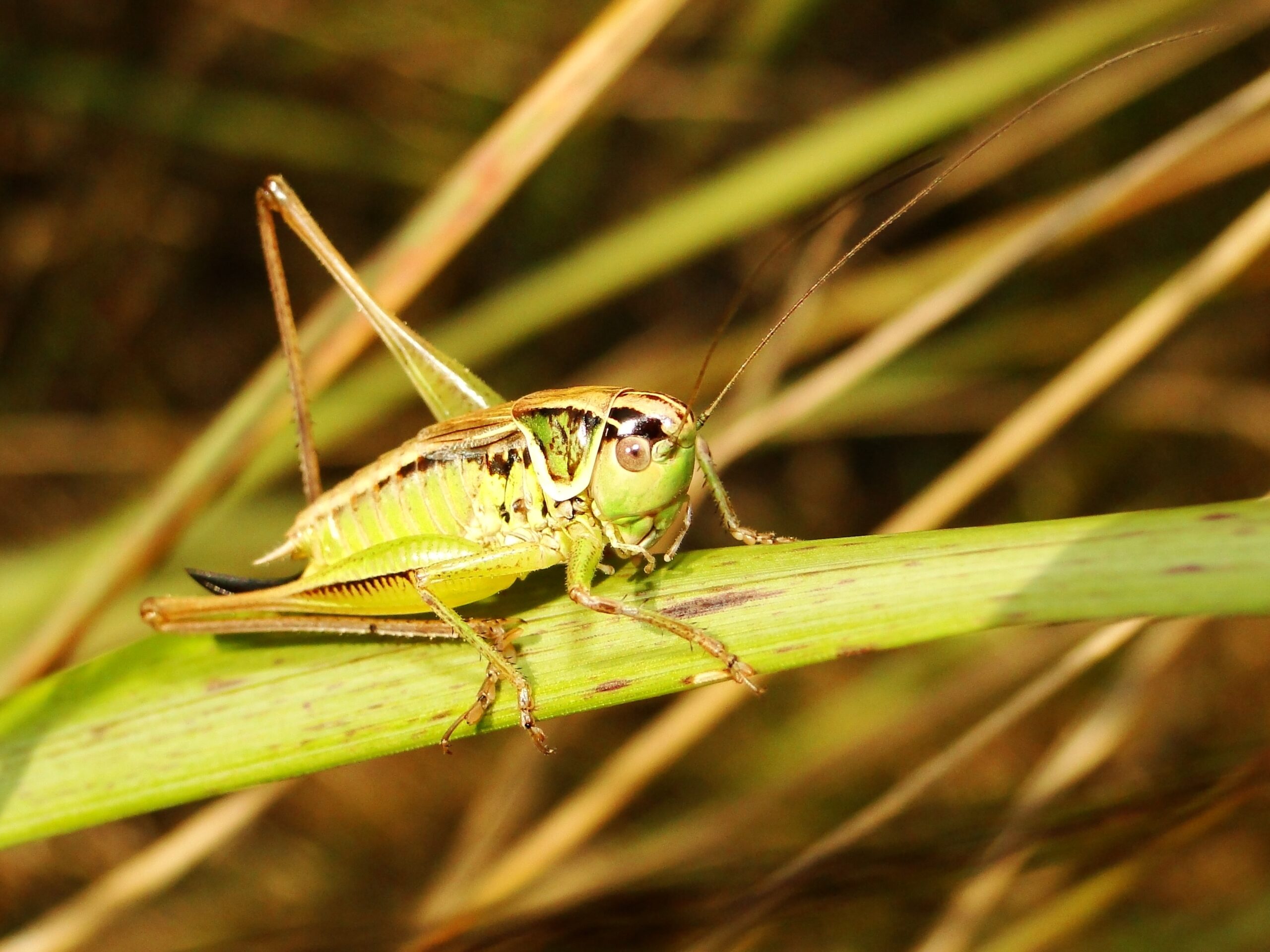
Grasshoppers as Symbols of Good Luck, Abundance, and Prosperity
One of the most common symbolic meanings attributed to grasshoppers is good luck, abundance, and prosperity. In many cultures, the sight of a grasshopper is considered a positive omen, bringing blessings and good fortune. The presence of grasshoppers in a field or garden is often seen as an indication of a bountiful harvest or a prosperous period ahead.
Grasshoppers’ association with abundance and luck stems from their ability to rapidly reproduce and multiply in large numbers. Their prolific breeding habits represent fertility and the potential for growth and abundance in various aspects of life.
Grasshoppers and Resurrection in Different Cultures
Across many cultures, grasshoppers are also associated with themes of resurrection and eternal life. The insect’s ability to shed its exoskeleton and emerge as a new, transformed creature through molting is often seen as a symbol of rebirth and renewal. The idea of resurrection is particularly prominent in ancient Egyptian mythology, where the god Khepri, depicted as a scarab beetle or a grasshopper, symbolized the sun’s rising and the eternal cycle of life.
Similarly, in Native American traditions, grasshoppers are seen as messengers of renewal and spiritual growth. Their sound, the rhythmic chirping, is believed to carry the spirits of ancestors, guiding individuals through the journey of life and offering them opportunities for personal transformation.
Grasshoppers Representing Luck, Prosperity, and Overcoming Obstacles
In addition to their association with luck and abundance, grasshoppers also symbolize the ability to overcome obstacles. Due to their remarkable leaping abilities, they navigate their surroundings with ease, transcending barriers effortlessly. This attribute has led to grasshoppers being seen as symbols of resilience and the capacity to overcome challenges and adversities.
Many individuals look to the grasshopper as a source of inspiration during difficult times, reminding themselves that they too can rise above obstacles and achieve success. The grasshopper’s determination and relentless spirit serve as a reminder to persevere and stay resilient in the face of adversity.
Grasshoppers as Symbols of Intuition and Creativity
The grasshopper’s ability to detect subtle changes in its environment and respond quickly has led to its association with heightened intuition and creativity. Its keen sense of observation and acute hearing are believed to symbolize the importance of listening to one’s inner voice and trusting one’s instincts.
In various cultures, the grasshopper is regarded as a symbol of creative inspiration and artistic expression. Artists, musicians, and writers may seek guidance from the grasshopper’s symbolism to tap into their creative potential and find inspiration for their work.
Grasshoppers Symbolizing Taking a Leap of Faith and Embracing Change
Grasshoppers are often seen as a symbol of taking a leap of faith and embracing change. The insect’s remarkable ability to leap great distances signifies the importance of taking calculated risks and stepping out of one’s comfort zone in pursuit of personal and professional growth.
The grasshopper’s agility and willingness to leap into the unknown serve as a reminder to embrace change and adapt to new circumstances. Just as the grasshopper takes a leap forward, individuals are encouraged to take bold steps in their lives and be open to new experiences and opportunities.
Grasshoppers Representing Freedom, Independence, and Decision-making
Grasshoppers are symbolic of freedom, independence, and the significance of making one’s own decisions. As solitary creatures, grasshoppers roam freely and rely on their own instincts and judgment to navigate their surroundings.
The grasshopper’s ability to make split-second decisions, particularly when it comes to leaping away from potential threats, is often seen as a metaphor for individual autonomy and the importance of exercising personal judgment. Grasshoppers inspire individuals to trust their own decision-making abilities and embrace the freedom to chart their own path.
Grasshoppers as Symbols of Adaptability and Openness to Change
Adaptability and openness to change are key traits attributed to grasshoppers. As insects capable of thriving in various environments, grasshoppers symbolize the importance of being adaptable in the face of shifting circumstances and embracing change for personal growth.
Grasshoppers undergo metamorphosis during their life cycle, transforming from wingless nymphs to fully developed adults capable of flight. This transformational process represents the potential for personal growth and adaptation to different stages of life.
Grasshoppers Associated with Spiritual Insight and Enlightenment
In many spiritual traditions, grasshoppers are believed to be associated with spiritual insight and enlightenment. Their repetitive chirping, particularly during the evening and early morning hours, is seen as a rhythmic chant that can induce a meditative state and bring about a sense of spiritual awakening.
The grasshopper’s ability to communicate through sound is often interpreted as a message from the spiritual realm, guiding individuals towards greater self-awareness and enlightenment. It is believed that paying attention to the messages conveyed by grasshoppers can lead to a deeper understanding of oneself and the universe.
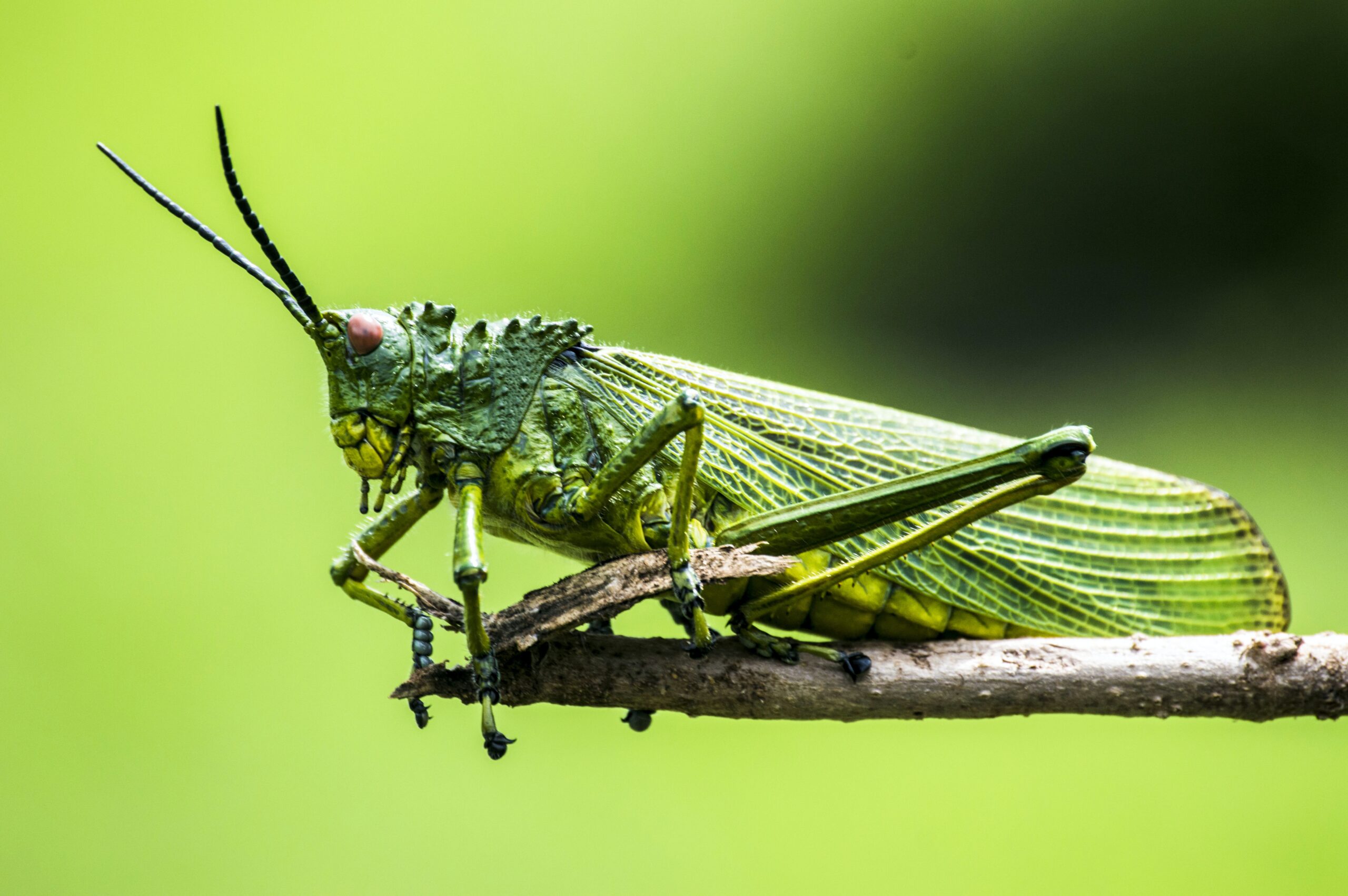
Grasshoppers as Omens and Symbols in Various Cultures
Grasshoppers hold diverse cultural symbolism and are considered significant omens and symbols in various societies. For example, in Chinese culture, a grasshopper is seen as a sign of good fortune, wealth, and abundance. Its presence is believed to bring prosperity and success in business and financial endeavors.
In Native American folklore, grasshoppers are regarded as messengers between the physical and spirit worlds. Their appearance is considered a sacred communication from ancestors and spirit guides, guiding individuals towards the right path and offering protection.
Interpretations of a Grasshopper Visit: Wealth, Death, or Disaster
The interpretation of a grasshopper visit can vary among different cultures and belief systems. In some cultures, a grasshopper’s arrival is seen as a sign of impending wealth, abundance, and financial prosperity. The presence of a grasshopper is considered fortuitous, indicating that a period of financial gain may be on the horizon.
However, in other cultures, a grasshopper visit may be interpreted differently. Some believe that a grasshopper sighting is a warning of impending death or disaster. This interpretation may stem from the grasshopper’s association with insects that can cause damage to crops and vegetation, leading to potential food shortages and subsequent disasters.
It is essential to note that interpretations of grasshopper visits may vary and should be understood within their cultural and contextual frameworks. Different cultures hold unique beliefs and perspectives on the symbolism and omens associated with various creatures, including grasshoppers.
Grasshopper Symbolism in Different Contexts
Grasshopper symbolism extends beyond cultural beliefs and practices. The significance of grasshoppers can also be explored in different contexts, such as biblical references, gender prediction superstitions, and their representation in art, literature, and popular culture.
Grasshoppers as Symbols of Good Luck, Renewal, Change, and Freedom
In various cultural contexts, a green grasshopper is seen as a symbol of good luck, renewal, change, and freedom. The vibrant green color represents growth, vitality, and the potential for positive transformation. When a green grasshopper appears, it is often seen as a sign that favorable changes and opportunities for personal growth are on the horizon.
The grasshopper’s association with freedom stems from its agile and independent nature. Its ability to leap and fly freely signifies liberation from constraints and the courage to explore new horizons. The sight of a green grasshopper reminds individuals to embrace change, break free from limitations, and seize new opportunities.
Grasshoppers’ Significance in Biblical References
In biblical references, the term “grasshopper” is used metaphorically to describe someone weak and insignificant. It appears multiple times in the Old Testament, representing human fragility and the relative insignificance of mortal beings compared to the divine.
The grasshopper’s vulnerability and ephemeral nature serve as a reminder of humanity’s limitations and the need for humility. The biblical references to grasshoppers encourage individuals to recognize their dependence on a higher power and embrace a sense of humility and reverence in the face of the vastness of creation.
Symbolic Meanings of Brown Grasshoppers
While green grasshoppers are often associated with positive symbolism, the interpretation of brown grasshoppers can vary. In general, brown grasshoppers are seen as a symbol of luck, change, or abundance. Their earthy tones and ability to blend into their surroundings are symbolic of grounding and stability.
The presence of a brown grasshopper may be seen as a sign that one should remain grounded and seek stability during times of change or transition. It can also be interpreted as an indication of the need to adapt to new circumstances and embrace the opportunities that come with change.
Superstitions surrounding Green Grasshoppers and Pregnancy
Superstitions surrounding green grasshoppers and pregnancy are prevalent in certain cultures. According to popular belief, the appearance of a green grasshopper indicates that a woman may be pregnant or that a baby is on the way.
Furthermore, in some traditions, it is believed that the gender of the baby can be determined based on the behavior of a green grasshopper. For instance, if a green grasshopper jumps towards a pregnant woman, it is said to be a sign that she is expecting a girl. Conversely, if the grasshopper jumps away or remains still, it may indicate the arrival of a boy.
These superstitions relating to green grasshoppers and pregnancy highlight the cultural significance placed on the insect as a predictor of forthcoming life events.
Cultural Beliefs about Grasshoppers and Gender Prediction
Grasshoppers are often intertwined with gender prediction in various cultural beliefs. Beyond the superstitions surrounding green grasshoppers and pregnancy mentioned earlier, gender predictions can also be associated with the direction a grasshopper jumps, the sound it makes, or even the day of the week it appears.
For instance, in some cultures, it is believed that if a grasshopper jumps to the right, it signifies the birth of a boy, while a jump to the left represents the birth of a girl. The loudness or softness of a grasshopper’s chirping may also be interpreted as an indication of the baby’s gender. These cultural beliefs reflect the curiosity and fascination humans have with predicting and celebrating the arrival of new life.
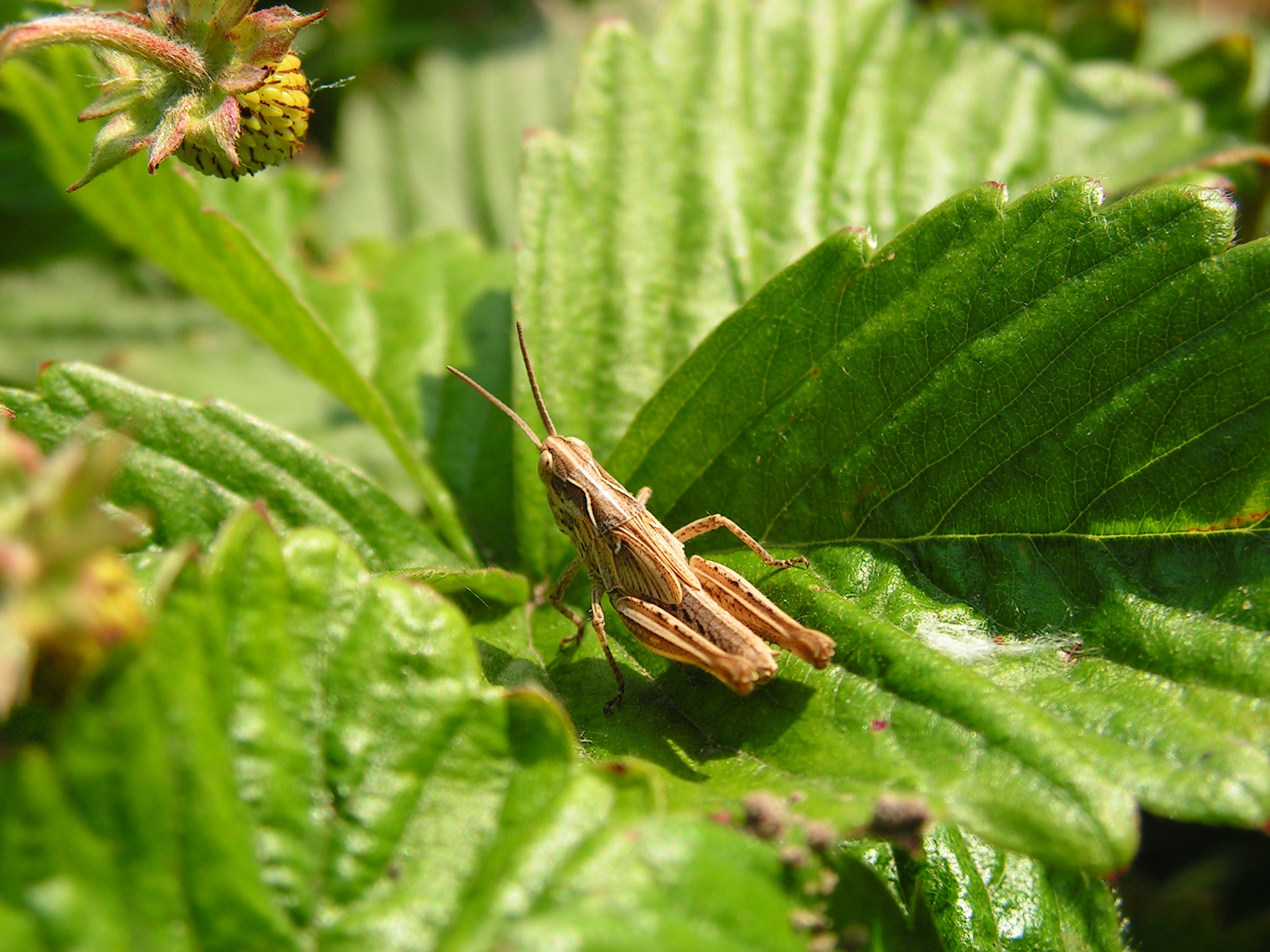
Examples and Interpretations
Grasshoppers have left their symbolic imprint on various forms of artistic expression, literature, and folklore throughout history. Their inclusion in these mediums often serves to convey deeper meanings and evoke specific emotions.
Grasshoppers in Art and Literature: Depictions and Symbolic Meanings
Grasshoppers have been depicted in countless works of art and literature, thanks to their rich symbolism and visual appeal. Artists and writers have utilized the grasshopper’s attributes to convey various themes and ideas.
In art, grasshoppers are often portrayed as symbols of vitality, growth, and the beauty of the natural world. Paintings and sculptures featuring grasshoppers can be found in ancient mythology, Renaissance art, and even contemporary pieces. These representations evoke a sense of awe and appreciation for the insect’s agility and adaptability.
Similarly, in literature, grasshoppers are used as metaphors for personal growth, transformation, and the passage of time. From Aesop’s fables to modern-day novels, the grasshopper’s symbolic presence emphasizes the importance of embracing change and seizing opportunities for personal development.
Grasshoppers as Spirit Animals: Guidance and Messages
Many individuals believe in the concept of spirit animals, which are animal guides believed to offer guidance and messages to those who connect with them. Grasshoppers are considered spirit animals for individuals seeking inspiration, intuition, and spiritual enlightenment.
As a spirit animal, the grasshopper offers guidance in navigating life’s challenges and encourages individuals to listen to their inner voice. It symbolizes the power of quiet observation and careful consideration before taking action.
Grasshopper Iconography across Different Cultures
Across different cultures, the representation of grasshoppers can vary in terms of their iconography and symbolic meanings. In ancient Egypt, for example, the grasshopper was equated with the god Khepri, a symbol of the sun’s rising and the eternal cycle of life. Depictions of grasshoppers in Egyptian iconography often highlight the insect’s association with rebirth and transformation.
In East Asian cultures, particularly China, grasshoppers are revered as symbols of good fortune and abundance. They are depicted in traditional art forms, such as paintings, ceramics, and textiles, as auspicious symbols bringing luck and prosperity. Their intricate representation often showcases the grasshopper’s vibrant colors and lively demeanor.
Grasshoppers in Folklore and Mythology: Stories and Tales
Grasshoppers feature prominently in various folklore and mythological narratives, where they serve as characters in stories and tales. These narratives often highlight the grasshopper’s characteristics and behavior while conveying moral lessons or cultural values.
In some Native American tribes, grasshoppers are depicted as messengers of change and transformation, guiding individuals on their spiritual journeys. Stories featuring grasshoppers as the protagonists emphasize qualities such as adaptability, resilience, and the importance of maintaining harmony with nature.
Grasshopper Symbolism in Practice
The symbolism of grasshoppers extends beyond belief systems and cultural representations. People incorporate grasshopper symbols in their personal beliefs, rituals, and practices to seek guidance, foster personal growth, and connect with nature and the spiritual realm.
Incorporating Grasshopper Symbols in Personal Beliefs and Practices
Individuals who resonate with the symbolism of grasshoppers often incorporate their presence in personal beliefs and practices. Some may create altars or sacred spaces adorned with grasshopper imagery as a focal point for meditation and reflection. Others may use grasshopper symbols as jewelry or tattoos, serving as a constant reminder of their desired attributes or goals.
The act of consciously acknowledging and engaging with grasshopper symbols in personal beliefs and practices allows individuals to cultivate a deeper connection with the natural world and tap into the qualities that grasshoppers represent.
Using Grasshoppers as Inspirations for Overcoming Adversity
Grasshoppers’ symbolism as creatures that can overcome obstacles and adapt to change makes them a source of inspiration for individuals facing adversity. Many people draw parallels between their own struggles and the grasshopper’s ability to leap forward and navigate challenging terrain.
By visualizing themselves as grasshoppers, individuals can cultivate a sense of resilience and determination to overcome obstacles in their lives. This mental shift can provide motivation and a fresh perspective, enabling individuals to tackle challenges with greater confidence and optimism.
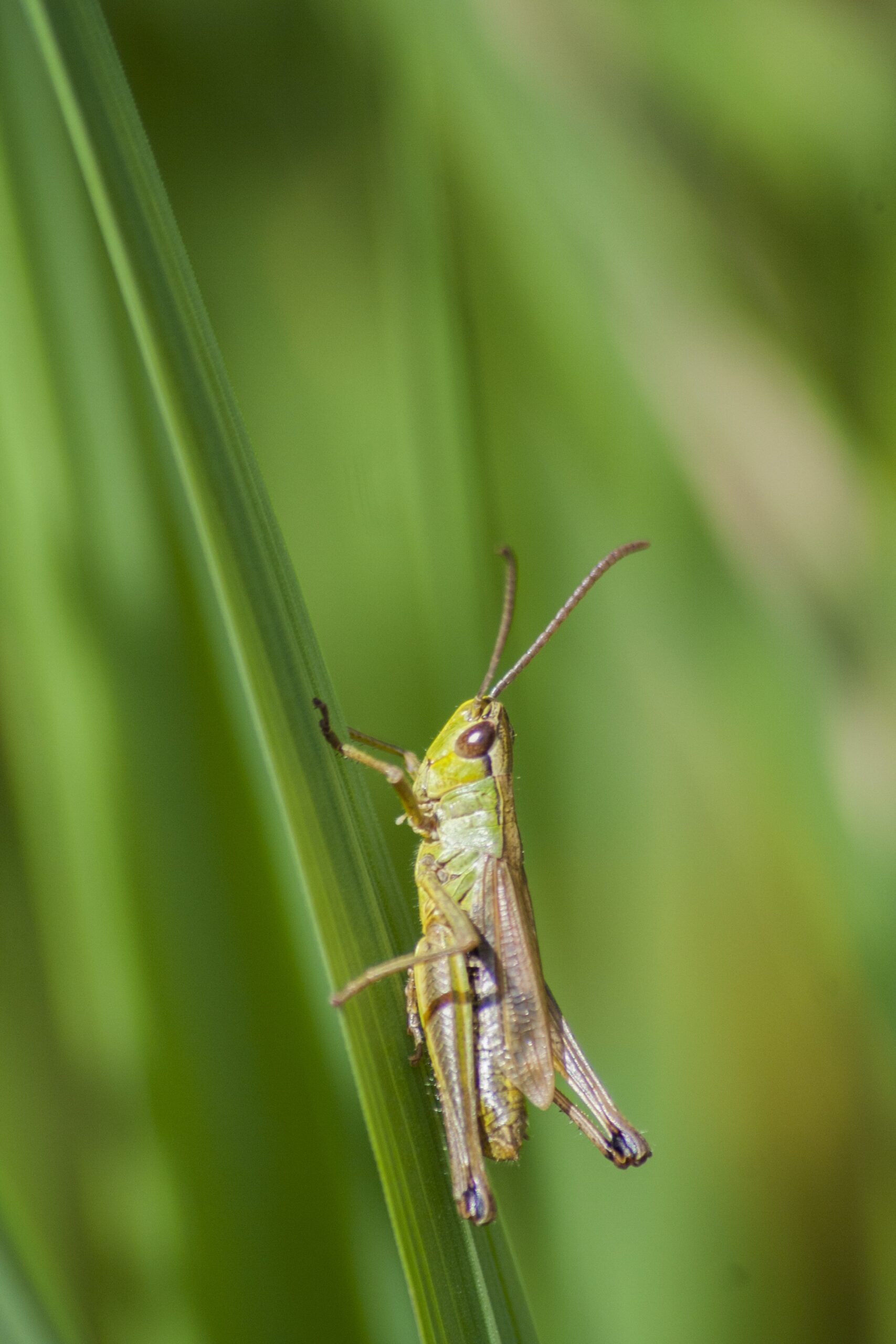
Harnessing the Symbolism of Grasshoppers for Personal Growth
The symbolism of grasshoppers can be harnessed as a catalyst for personal growth and transformation. Individuals seeking personal development may consciously embrace the qualities associated with grasshoppers, such as adaptability, intuition, and creative expression.
By embracing the grasshopper’s symbolism, individuals are encouraged to step out of their comfort zones, embrace change, and tap into their intuitive abilities. Engaging with grasshopper symbolism can also inspire individuals to explore new avenues of self-expression and foster creativity in their personal and professional lives.
Rituals and Ceremonies Involving Grasshoppers in Different Traditions
Grasshoppers are incorporated into rituals and ceremonies in various cultural and spiritual traditions as a means of invoking their symbolic qualities or seeking their guidance. These rituals may involve the physical presence of grasshoppers or the use of symbolic representations, such as images or sculptures.
For example, in certain Native American tribes, grasshoppers are seen as powerful totems that can guide individuals on their spiritual journeys. Rituals involving grasshoppers may include dances, chants, or other forms of ceremonial practices to honor and connect with the insect’s spiritual significance.
Grasshoppers as Environmental Indicators
Beyond their symbolic value, grasshoppers also play a significant role as indicators of ecosystem health, biodiversity, and environmental conditions. Their presence or absence can provide valuable insights into the state of an ecosystem and its overall ecological balance.
Grasshoppers as Indicators of Ecosystem Health and Biodiversity
Grasshoppers are important bioindicators, species whose presence, abundance, or behavior can reflect the health of an ecosystem. Researchers and environmentalists often study grasshopper populations to monitor and assess the biodiversity and overall ecological well-being of a specific area.
Changes in grasshopper populations can indicate shifts in plant diversity, land-use practices, or the effects of climate change. Monitoring grasshopper populations helps researchers gain a better understanding of ecosystem dynamics and potentially identify areas in need of conservation efforts.
Studying Grasshoppers for Environmental Research and Conservation
Grasshoppers’ ecological importance extends beyond their role as bioindicators. They are also subjects of scientific research and monitoring efforts to better understand their behavior, ecological interactions, and their impact on ecosystem functions.
Studying grasshoppers can provide valuable insights into ecological processes, such as nutrient cycling, pollination, and influences on plant communities. This knowledge is crucial for formulating effective conservation strategies and managing natural resources sustainably.
Grasshoppers as Bioindicators in Agriculture and Pest Management
In agricultural contexts, grasshoppers can have both positive and negative implications. While some species provide valuable pest control services by preying on crop-damaging insects, others can become agricultural pests themselves.
Monitoring grasshopper populations in agricultural landscapes helps farmers and pest management professionals assess the need for pest control measures and implement appropriate strategies. This proactive approach reduces dependence on chemical pesticides and promotes environmentally friendly pest management practices.
Fascinating Facts about Grasshoppers
Beyond their symbolic meanings and ecological significance, there are numerous fascinating facts about grasshoppers that highlight their diversity and unique characteristics.
Diversity and Characteristics of Grasshoppers
Grasshoppers belong to the order Orthoptera and are characterized by their long hind legs, powerful jumping ability, and ability to produce sound through stridulation. They are found on every continent except Antarctica and encompass a wide range of species, with estimates ranging from 11,000 to 20,000 identified species.
Grasshoppers vary greatly in size, coloration, and behavior. From the enormous Weta species in New Zealand to the delicate and intricately patterned tropical grasshoppers, their diversity showcases the incredible adaptability of this insect family.
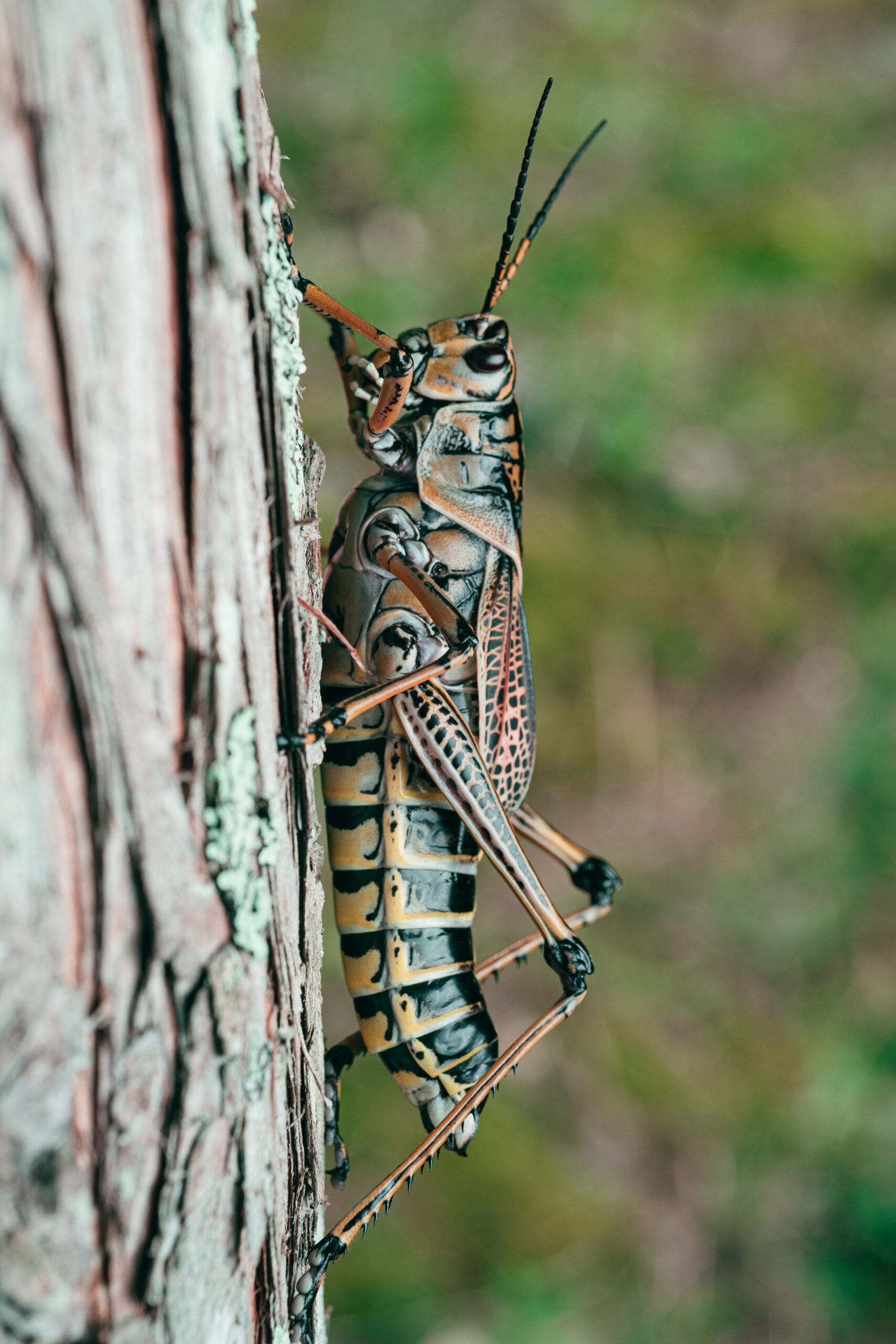
Grasshopper Diet and Behavior
Grasshoppers are herbivorous insects with a voracious appetite for vegetation. They feed on various types of plants, including grasses, leaves, and seeds. Grasshoppers are known for their ability to consume large amounts of plant material, which can have significant ecological implications.
Their diet and feeding behavior make grasshoppers influential components of food webs in many ecosystems. They serve as a source of food for predators, such as birds, mammals, and other insects, contributing to the overall balance of ecosystems.
Grasshopper Reproduction and Life Cycle
Grasshoppers undergo a process called incomplete metamorphosis, meaning they do not have a distinct larval stage like other insects. Instead, grasshoppers hatch from eggs as nymphs that closely resemble the adult form but lack wings. As they grow, they molt several times, shedding their exoskeletons until they reach maturity.
Grasshoppers have elaborate courtship rituals, often involving displays of vibrant colors, sound production, and elaborate movements. Males use their chirping sounds and visual displays to attract females and compete with other males for mating opportunities.
Grasshoppers in the Animal Kingdom: Taxonomy and Classification
Grasshoppers occupy a key position in the animal kingdom, belonging to the class Insecta, along with other insects such as beetles, butterflies, and ants. They are further classified into the order Orthoptera, which includes not only grasshoppers but also crickets, locusts, and katydids.
Within the orthopteran order, grasshoppers are classified into several families and subfamilies, each with their own unique characteristics. Taxonomic classification helps scientists study the evolutionary relationships and genetic diversity of grasshoppers, contributing to our understanding of their ecological roles and conservation needs.
Grasshopper Symbolism in Popular Culture
The symbolism of grasshoppers has also found its way into popular culture, often appearing in different forms of media as representations of various themes and ideas.
Grasshoppers in Movies, TV Shows, and Video Games
Grasshoppers have made occasional appearances in movies, TV shows, and video games, sometimes embodying the symbolic qualities and themes they represent. These appearances range from animated films and children’s shows featuring talking grasshoppers as inspirational characters to video games where grasshoppers are primary or secondary characters with unique abilities or attributes.
The inclusion of grasshoppers in popular culture serves to further disseminate their symbolic meanings and contributes to their recognition as significant creatures in the collective consciousness.
Grasshoppers in Music and Song Lyrics
Grasshoppers have also inspired musicians and songwriters who use their symbolism to convey deeper meanings and emotions. From metaphorical references to literal mentions, grasshoppers find their way into lyrics and song titles in a variety of musical genres.
Whether used as a symbol of personal growth and resilience or as a metaphor for love and freedom, songs featuring grasshoppers create connections between the natural world and human experiences, evoking a range of emotions and reflections.
Grasshopper References in Advertising and Marketing
Grasshoppers have occasionally been used in advertising and marketing campaigns to convey specific messages or associate particular qualities with products or services. Companies may incorporate grasshopper imagery or references to evoke feelings of luck, prosperity, or personal growth.
These marketing efforts capitalize on the grasshopper’s symbolism and its resonance with certain beliefs and aspirations held by consumers. By aligning their brand or product with grasshopper symbolism, advertisers seek to establish positive connections and foster a sense of identification among their target audience.
Grasshoppers in Sports Team Names and Mascots
The symbolism of grasshoppers has even extended to sports team names and mascots. Grasshoppers are often chosen as mascots for teams, conveying qualities such as agility, speed, and resilience.
Teams with grasshopper mascots may also draw on the insect’s symbolism of taking leaps of faith, embracing change, and overcoming obstacles. These qualities resonate with the competitive nature of sports and serve to inspire both athletes and fans alike.
Similar Symbols and Comparisons
To fully understand the symbolism of grasshoppers, it is helpful to explore their relationship with other similar insects and the distinctive meanings associated with them.
Grasshoppers vs. Crickets: Contrasting Symbolism and Meanings
Grasshoppers and crickets often share similar habitats and characteristics, leading to occasional confusion between the two. However, their symbolism and meanings can differ significantly.
While both grasshoppers and crickets are associated with luck and abundance, there are notable distinctions. Grasshoppers are often seen as more active and powerful symbols, representing agility, resilience, and taking leaps of faith. Crickets, on the other hand, are often associated with patience, good fortune, and protection.
Grasshoppers vs. Locusts: Distinctions and Symbolic Associations
Grasshoppers and locusts, two closely related insects, are often linked due to their physical similarities and related life cycles. However, their appearances and behaviors can differ dramatically, leading to distinct symbolic associations.
Grasshoppers are predominantly solitary insects, whereas locusts are known for their ability to form swarms and cause significant agricultural damage. Symbolically, locusts are often associated with devastation, destruction, and plagues in some cultural and religious contexts, while grasshoppers embody more positive qualities such as luck, resilience, and abundance.
Misconceptions and Negative Interpretations
While grasshoppers are generally associated with positive symbolism, there are misconceptions and negative interpretations that can arise due to cultural variations and superstitions.
Grasshoppers as Symbols of Weakness and Insignificance
In biblical references, the term “grasshopper” is used to describe someone weak and insignificant. This negative connotation reflects the relative frailty and fleeting nature of humans when compared to divine power. However, it is essential to interpret these references in their cultural and religious contexts rather than generalizing the symbolism of grasshoppers as universally negative.
Negative Cultural Interpretations and Superstitions about Grasshoppers
In certain cultures, grasshoppers are associated with negative interpretations and superstitions. These beliefs may arise from the potential agricultural damage caused by grasshopper infestations. The mass consumption of crops stimulated by large grasshopper populations can lead to food shortages and financial losses, triggering negative associations and unfavorable superstitions.
It is crucial to recognize and respect the cultural nuances and contextual variations surrounding grasshopper symbolism to gain a comprehensive understanding of their diverse meanings.
Conclusion
Grasshoppers hold a wealth of symbolism and meaning that transcends cultural boundaries and encompasses various aspects of human beliefs, practices, and creative expressions. From their association with luck, abundance, and prosperity to their representation of personal growth, resilience, and spiritual enlightenment, grasshoppers serve as powerful symbolic creatures.
Their ability to adapt, leap forward, and navigate obstacles inspires individuals to embrace change, trust their intuition, and make decisions that align with their own aspirations. Grasshoppers also hold ecological significance as indicators of ecosystem health and biodiversity.
Through their presence in art, literature, and popular culture, grasshoppers continue to captivate and resonate with people worldwide. Their diverse representations in different media contribute to their recognition as dynamic and meaningful symbols.
Understanding the symbolism of grasshoppers allows individuals to connect with nature, tap into their inner strengths, and find inspiration for personal growth and transformation. Whether as spiritual guides, subjects of scientific study, or sources of artistic inspiration, grasshoppers offer profound insights into the interconnectedness of the natural world and the human experience.



